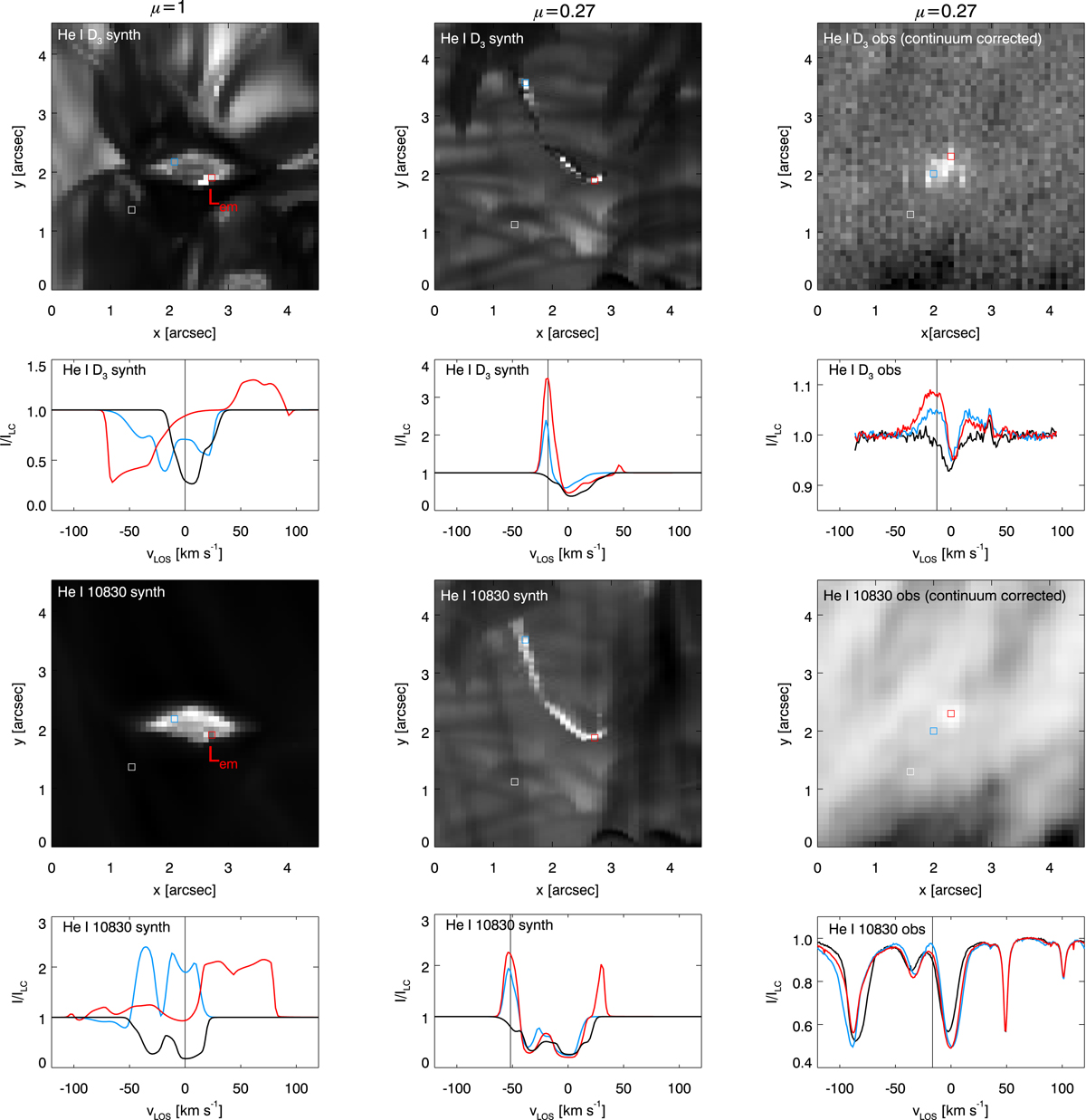Fig. 5.

Download original image
Comparison of a simulated and an observed EB in He I 10 830 Å and He I D3. Top two rows: He I D3 images and spectra, and lower two rows: He I 10 830 Å images and spectra. Left column: synthetic data at μ = 1, middle column: synthetic data at μ = 0.27, and right column: observed data at μ = 0.27. The He I D3 observed image is normalized by the local continuum. The red and blue squares in the images indicate the position of the spectra that are displayed in the corresponding color in the panel below the image. The white square corresponds to the black profile. The He I 10 830 Å observed spectral region also contains a Si I line at vLOS ∼ −85 km s−1 and two telluric lines at vLOS ∼ 50 km s−1 and vLOS ∼ 100 km s−1. The vertical black lines on the spectra indicate the wavelength position at which the image is shown. We have adopted the observer point of view for Doppler shifts in which a negative vLOS corresponds to a blueshift in the spectral line. The label Lem indicates the pixel with maximum emission in He I D3, which we study in detail in Sect. 3.3. The black spectrum is an average over the entire field of view shown in the image. The emission feature in the observed He I D3 spectrum at vLOS ∼ 40 km s−1 is an artifact resulting from a telluric correction applied to the spectra. Details of this procedure can be found in Libbrecht et al. (2017).
Current usage metrics show cumulative count of Article Views (full-text article views including HTML views, PDF and ePub downloads, according to the available data) and Abstracts Views on Vision4Press platform.
Data correspond to usage on the plateform after 2015. The current usage metrics is available 48-96 hours after online publication and is updated daily on week days.
Initial download of the metrics may take a while.


